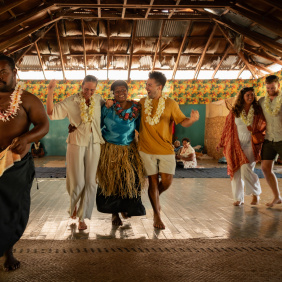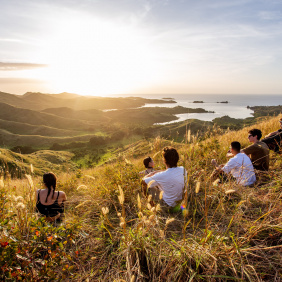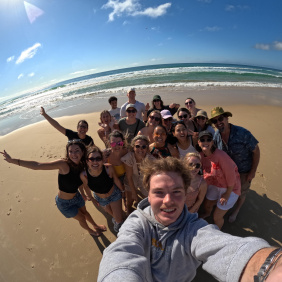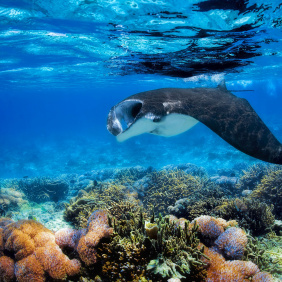About Kakadu
Kakadu National Park is a UNESCO protected park located in the Northern Territory, 171km southeast of the state’s capital; Darwin. It is around the same size as Wales covering nearly 20,000 square kilometers. Most of the area used to be underwater which is evident as you walk amongst the drastic vertical and stepped cliffs along the 330m high and 500km long escarpment wall formed from ancient sea cliffs.
One of Kakadu’s main highlights is the Arnhem Land formed of a flat plateau above the sea dissected by a network of chasms and gorges within which you’ll find tall monsoon forests thriving. Pieces of the sandstone plateau have been eroded away creating lone islands in the ancient seas that once flowed here, now they stand to watch towering over lowland plains.
70% of the park is the lowlands peppered with serene waterholes and billabongs while the southern hills contain exposed 2500-million-year-old volcanic rock. All across the park, you can find Aboriginal Rock Art Sites with some paintings up to 20,000 years old!
Kakadu Tours
If you plan to drive from and return to Darwin through Kakadu National Park you will need to take the 900km loop called Nature’s Way. Alternatively, some people start from Katherine and end in Darwin, making it around a 550km drive. Some roads within the park are 4WD only and many sections can be treacherous in wet weather.
Rivers, creeks, and waterholes within the park present a fantastic environment for both salt and freshwater crocodiles. Tread carefully whilst near any water, there are Crocodile Management Zones where you can have a dip, but you still enter the water at your own risk. There’s a reason why the Crocodile Dundee films were shot here!
Wildlife in Kakadu
Kakadu has been declared the best region in the world for bird watching, with 30% of all Australia’s bird species found here. Over half of the park has been identified as a protected Important Bird Area that supports many rare and endangered species.
Around 74 different species of mammals including wallabies, dingos, kangaroos, bandicoots, and some 117 species of reptiles such as goannas, snakes, and crocodiles have been recorded in the park as well as 53 species of freshwater fish have made Kakadu a popular destination for recreational fishing.
Kakadu travel itinerary and things to do:
- Learn about Aboriginal traditions at the Warradjan Cultural Centre
- Cruise across the famous Yellow Water Billabong
- Have a picnic at Nourlangie Rock
- Hike up the escarpment to the infinity pool at Gunlom
- Take a scenic flight over the cascading waterfalls
- 4WD to the sandy beaches at Jarrangbarnmi
- Bird Watch at the Mamukala wetlands
Kakadu Tours Can Be Tailored According to Your Needs
Do you want a 1 Day Kakadu National Park Explorer? Or how about a 3 Day 4WD Kakadu and Litchfield Tour with all meals and camping equipment included? With so many beautiful places to choose from, we know that exploring Kakadu National Park can be confusing for some, which is why we offer various tour options for travelling convenience. For example, one of our most popular tours is the 3 Day 4WD Kakadu Tour, be transported in an air-conditioned 4WD vehicle via Litchfield National Park before spending the first night at a private campsite in Kakadu. Spend the trip hunting down the internationally renowned Aboriginal art, crocodiles, waterfalls, and panoramic views!
Frequently asked questions about Kakadu
Is Kakadu expensive to visit?
The entrance fee for Kakadu National Park is $25 per person, on top of this you need to consider the cost of petrol if self-driving, with some difficult terrain in sections and considering the vastness of the park, this will often amount to more than the cost of a tour.
How long do you need to see Kakadu?
3 days
Your journey through Kakadu will last upwards of 550km, to prevent driving at night and for extensive periods of time, we recommend a minimum of 3 days to safely enjoy what the park has to offer.
What is the weather like in Kakadu?
Kakadu has a tropical climate creating a distinct dry season between May and September, and the wet season between November and April.
When is the best time to visit Kakadu?
There are pros and cons to visiting Kakadu at any time of the year. During the dry season the weather is not so humid, all roads are open and it is unlikely to rain, however the park will be more crowded at this time, waterfalls will be dryer and the wildlife is not as plentiful. The wet season brings fantastic tropical thunderstorms, roaring waterfalls and busy wildlife but some roads will be inaccessible due to flooding and camping in the rain and amongst the increased number of insects can be challenging.
If you are looking for a different trip, visit the Uluru trips page.



